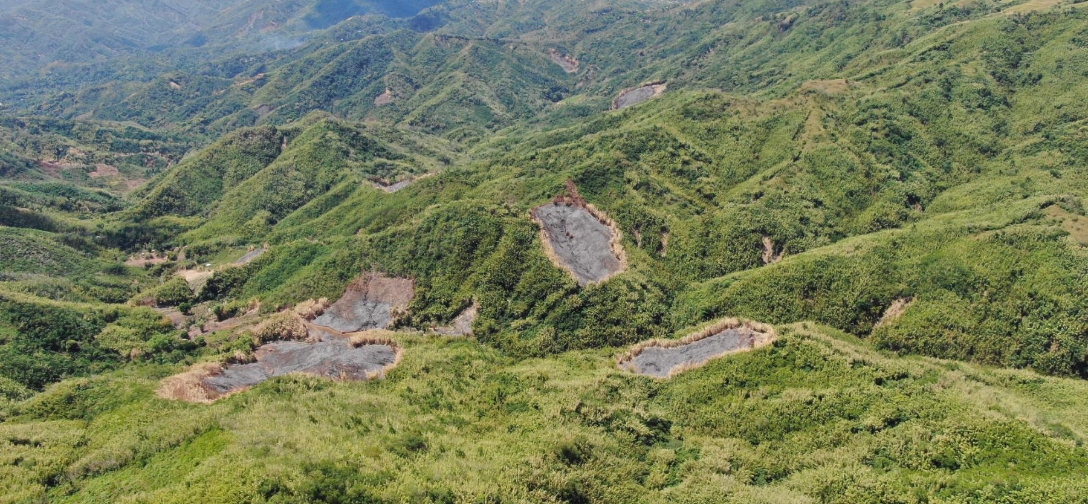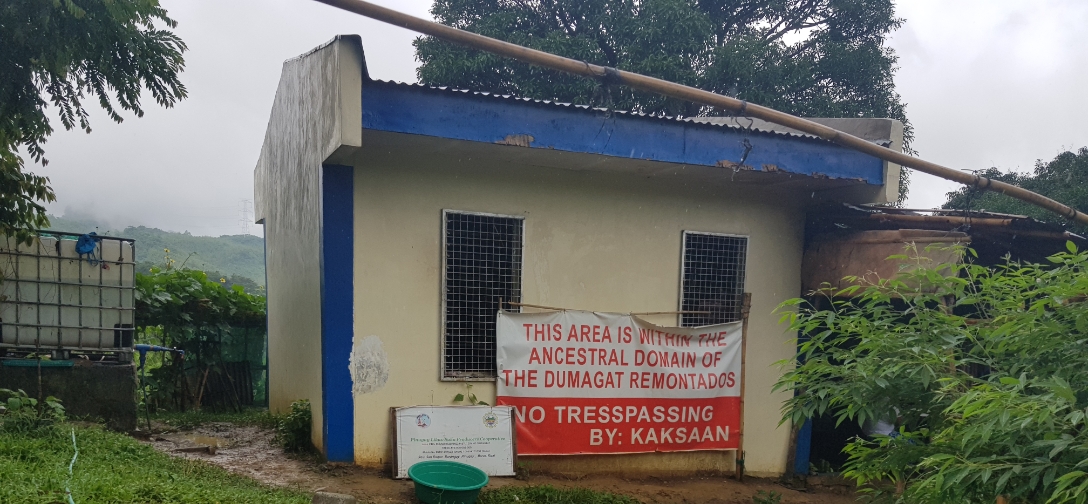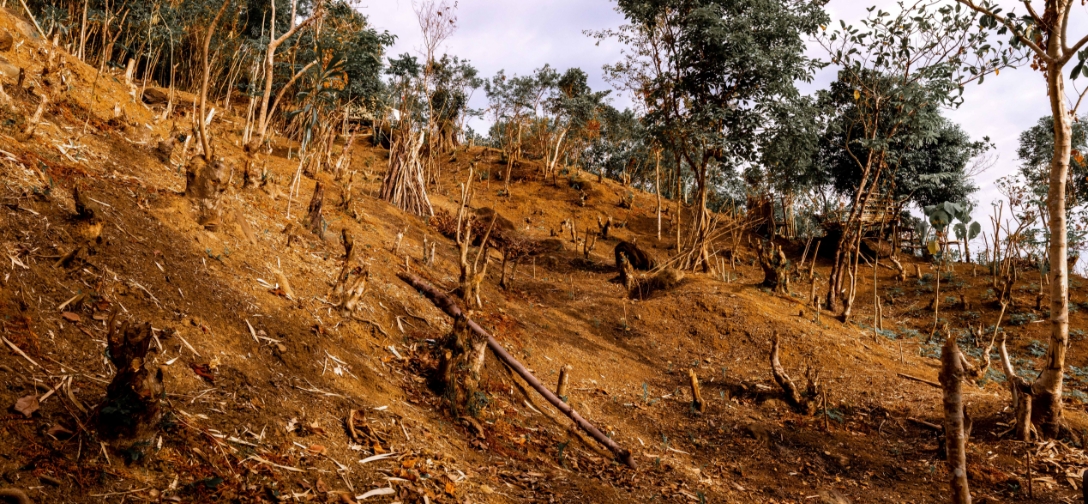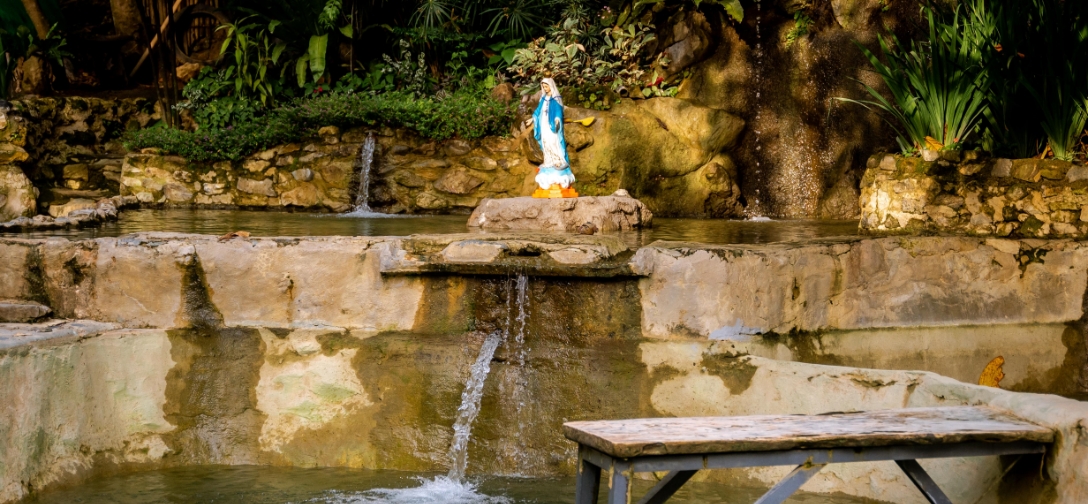RIZAL, Philippines — Typhoon Fabian (In-fa) just left the country on July 24 and Kukan was at work, patrolling the periphery of the Bayog Ranger Station inside the Upper Marikina River Basin Protected Landscape (UMRBPL).
When it started to drizzle, he ran to the station where he found his co-worker Melvin. The station is near a stream and a resort that encroached into the reforestation site.
Kukan has been a forest ranger of the Masungi Georeserve Foundation for more than a decade. He knew the risks of the job so when he heard dogs barking from the resort’s direction and a stone hitting the station’s galvanized iron wall, his immediate thought was an attack.
“Melvin turned the lights off inside the Bayog Ranger Station. Then, we crouched on the floor so no one will see us,” Kukan said in a sworn affidavit.
Kukan’s instincts were correct. A hail of bullets followed shortly thereafter. He was hit in the neck and a bullet grazed Melvin’s head. The two forest rangers have filed frustrated murder charges against nine individuals over the attack.
The incident reflects the danger that goes with protecting the environment and the human pressure on the country’s forests.
"We’re only safeguarding the land of the government. We’re taking care of the environment, then they shot us,” said Kukan. (For their protection, the two rangers are referred to by their first names only).
Abused watershed
The 26,126-hectare UMRBPL covers five municipalities of Rizal—Antipolo, Baras, Rodriguez, San Mateo and Tanay. Also called the Upper Marikina watershed, it is located upstream of Metro Manila.
This shows the forest cover of the Upper Marikina River Basin Protected Landscape from 2003 to 2015. Moss green represents closed forest, while light green represents open forest.
Conserving the UMRBPL is a responsibility bigger than the watershed. It regulates water flow from the Sierra Madre mountain range to upland communities and lowland cities in the capital region. It is also a habitat of threatened flora and fauna and home to indigenous peoples.
Masungi is restoring a 2,700-hectare land within the protected area in partnership with the government. The Department of Environment and Natural Resources, then under the leadership of Gina Lopez, sought the organization’s help to bring abused lands back to life.
A multi-award-winning team of young conservationists, the foundation is known here and abroad for the Masungi Georeserve, a conservation and ecotourism site that was once a degraded strip of land. The group has been lauded for its current efforts to protect the Upper Marikina watershed.
Natural defense vs strong storms
The catastrophic flooding caused by Typhoon Ulysses (Vamco) in November last year highlighted the need to keep watersheds intact and healthy.

This undated handout photo shows "scars" from forest clearings in the Upper Marikina River Basin Protected Landscape. Masungi Georeserve Foundation
A rapid research study conducted by the Advocates of Science and Technology for the People (Agham) suggested that aside from the extreme rainfall event, the frail state of the Upper Marikina watershed contributed to the deluge that submerged parts of Rizal and Marikina City.
Agham explained that the denuded forest cover in the watershed reduces the absorption of water as drainage canals become more silted.
“The UMRBPL is your safety net against typhoons and high density rains. With the continued forest loss and increase of paved roads, high velocity run-off from the uplands will threaten the low-lying areas with flooding,” said Edmund Leo Rico, executive director of Center for Conservation Innovations.
Ulysses dumped 356 millimeters of rainfall in a span of 24 hours, causing massive flooding in Metro Manila, Rizal, Bicol and other low-lying areas in Luzon. The cyclones that preceded Ulysses such as Super Typhoon Rolly (Goni) also affected the absorptive capacity of the soil, which was already reduced before it unleashed large volumes of rainfall upstream.
A report from the International Panel on Climate Change released in August said the frequency and intensity of heavy precipitation events have increased since the 1950s due to human-induced climate change. The Philippines, one of the most vulnerable countries to climate change, is expected to be hit by more intense and frequent bouts of rain.
Big, small business interests
In 2015, the Upper Marikina watershed only had some 20% of forest cover left.
Its integrity has been degraded by decades of illegal logging, quarrying and mining activities, and construction of establishments such as resorts. Proximity to the capital region and the increase in accessibility of its upland areas are driving this degradation, experts and government officials said.

This photo taken on July 22, 2021 shows the area where armed guards of a private firm have been stationed since last year. Philstar.com/EC Toledo
“More people are able to conduct activities that lead to increase in pressure and threats such as the increase in the demand or requirement for household constructions and conversion of biodiverse areas (riparian habitats) to other land uses such as housing or residential areas or agriculture,” Rico said.
Masungi workers have locked horns with small and large businesses—from upland residents who turn to charcoal making, to quarry operators, to resort owners illegally occupying forestlands inside the protected landscape.
“Our problem is people who have wealth, who have capacity to have their own land, people who have connections and who are using the rights that are afforded supposedly to the poor people and the underprivileged people to do all of these things inside the watershed.
Massacre of trees’
For Masungi employees, smoke signals kaingin (slash and burn farming). But sometimes, it indicates land clearing for other purposes.

This undated handout photo shows the so-called "tree massacre site" inside the protected area. Masungi Georeserve Foundation
In May, they discovered that the forest fires that they had been monitoring since April resulted in the clearing of 16 hectares of land inside the protected area. Hundreds of trees were cut down and large amounts of vegetation burned, the scene was so horrible they called it a “massacre.”
“I was frustrated because we had already raised the alarm a lot of times,” Dumaliang said.
The “tree massacre site” is in the same area where armed guards of a private firm, Rublou Inc., were stationed since last year. The guards said it’s private property. Rublou Inc. is owned by retired police general Luizo Ticman, who claimed he was helping protect the ancestral domains of the indigenous Dumagat-Remontado community.
In July, vegetation returned to the tree massacre site, although signs of encroachment such as dead trees and illegal structures remained. A farmers’ organization called “Farmers and Habitants in Sitio San Roque Brgy. Pinugay Baras, Rizal Association Inc” also planted vegetables and corn in parts of the protected area.
Dumaliang said the farmers were invited and brought to the watershed after losing their jobs in the lowland. When asked who brought them there, the farmers refused to say for fear of their safety.
The poor and vulnerable people often fall victim to misrepresentation and manipulation of “environmental plunderers” in the watershed, Masungi said.
Problems with resorts
Masungi workers also deal with individuals who have built resorts and structures inside the protected area and on its waterways. One of the resorts, GSB, has several swimming pools, facilities and other permanent structures inside the project site. The resort does not have a permit from the local government.

A religious structure is placed in one of the swimming pools in GSB resort, which is said to be illegally encroaching into the reforestation project of Masungi Georeserve. Masungi Georeserve
“Why do you have swimming pools in an already sensitive area, where the water for the community is insufficient, where trees are being decimated?” Dumaliang asked.
When the resort was shut down by the local government in late May, an alleged religious group called “Sanctuario de Nuestra Señora de Perpetua Socorro” occupied the area.
A document provided by the foundation said the “Sanctuario’s bishop” has been dismissed by the Simbahang Katoliko Pilipino Kristiyano, a denomination not associated with the Roman Catholic Church.
The Episcopal Church in the Philippines also said that the personalities of the religious group are not priests nor members of the Anglican Church.
Dumaliang said the “priests” kept mentioning their links to a certain Deogenes Rodriguez of the Rodriguez Estate, which has been reportedly using alleged Spanish titles to claim forest lands in Rizal.
In December 2020, a certain Deogenes Rodriguez was identified as being behind the recruitment of alleged Moro fighters in a training camp in San Mateo, Rizal. Col. Joseph Aguelles, Rizal police director, told the media that the recruits were being trained not to become Moro fighters but as members of private armies of landgrabbers.
GSB resort owner Arnel Olitoquit has been linked to Rodriguez as well, according to Dumailang.
Two months after the massacre of trees was discovered by Masungi, the Department of Interior and Local Government recommended filing charges against government officials and private entities, including Olitoquit and Jay Sambilay, for “wanton disregard and violation” of environmental laws.
The two were also named in the complaint filed Kukan. Olitoquit has denied the allegations.
“The claims that I am big time or I have connections to the government that’s why I can harass [people] and commit abuses are false,” Olitoquit said in a video uploaded on Facebook.
He accused Masungi of wanting to acquire a patch of land that he “worked hard for.”
Current and former government officials who were supposed to enforce laws also pose threats to the watershed.
Dumaliang said that a former provincial environment officer has a resort inside the protected area. DENR Calabarzon declined to comment on the matter “since this is a part of an in-depth investigation.”
“What we are seeing here is that the occupation and selling of forest lands in the Philippines has become an organized crime and syndicated activity,” Dumaliang said.
“Fictitious claims, leases, and titles continue to plague the conservation of our forests.”
This story was produced in collaboration with the Kalikasan People's Network for the Environment, with the support of Internews' Earth Journalism Network and Asian Center for Journalism.
